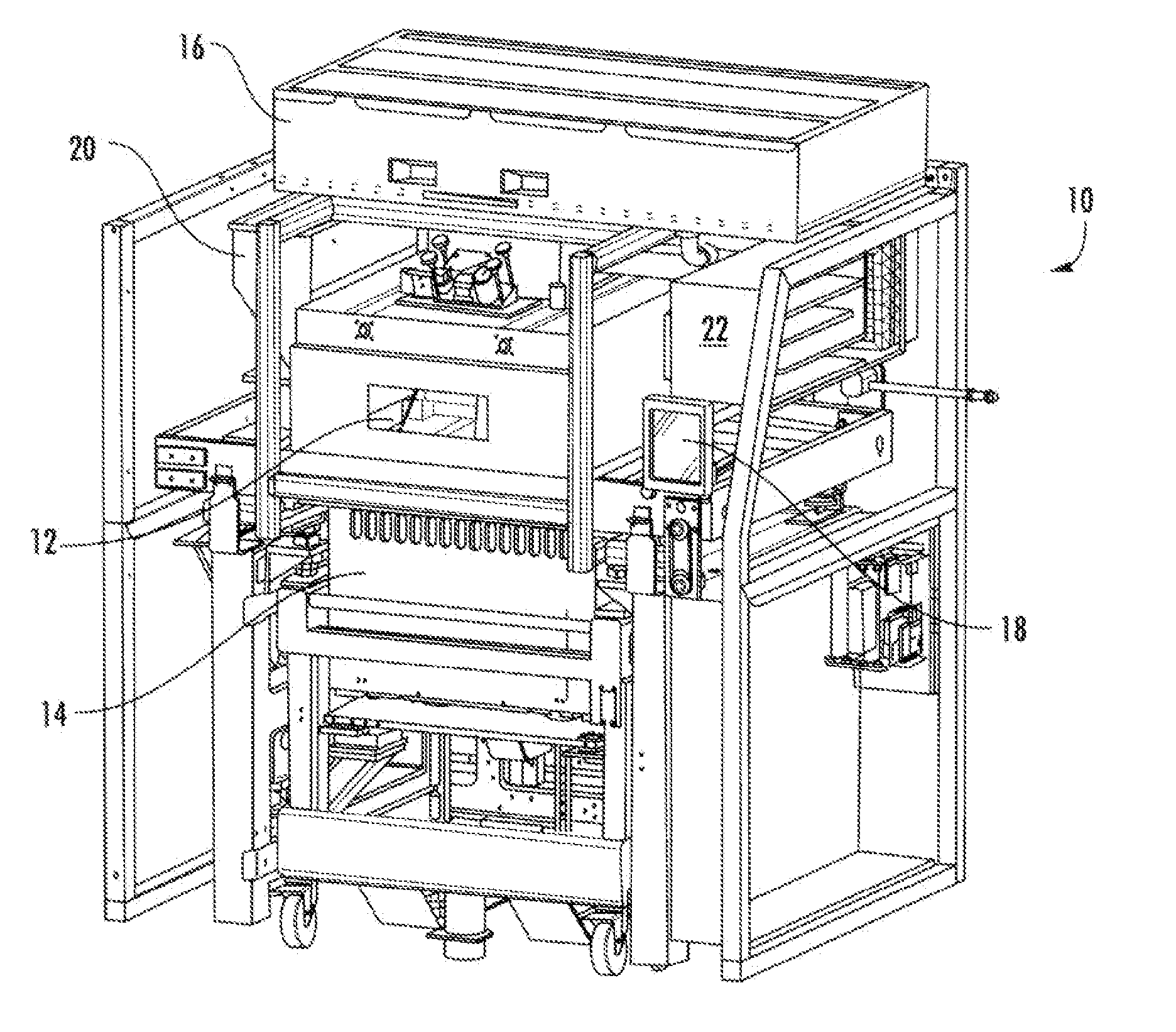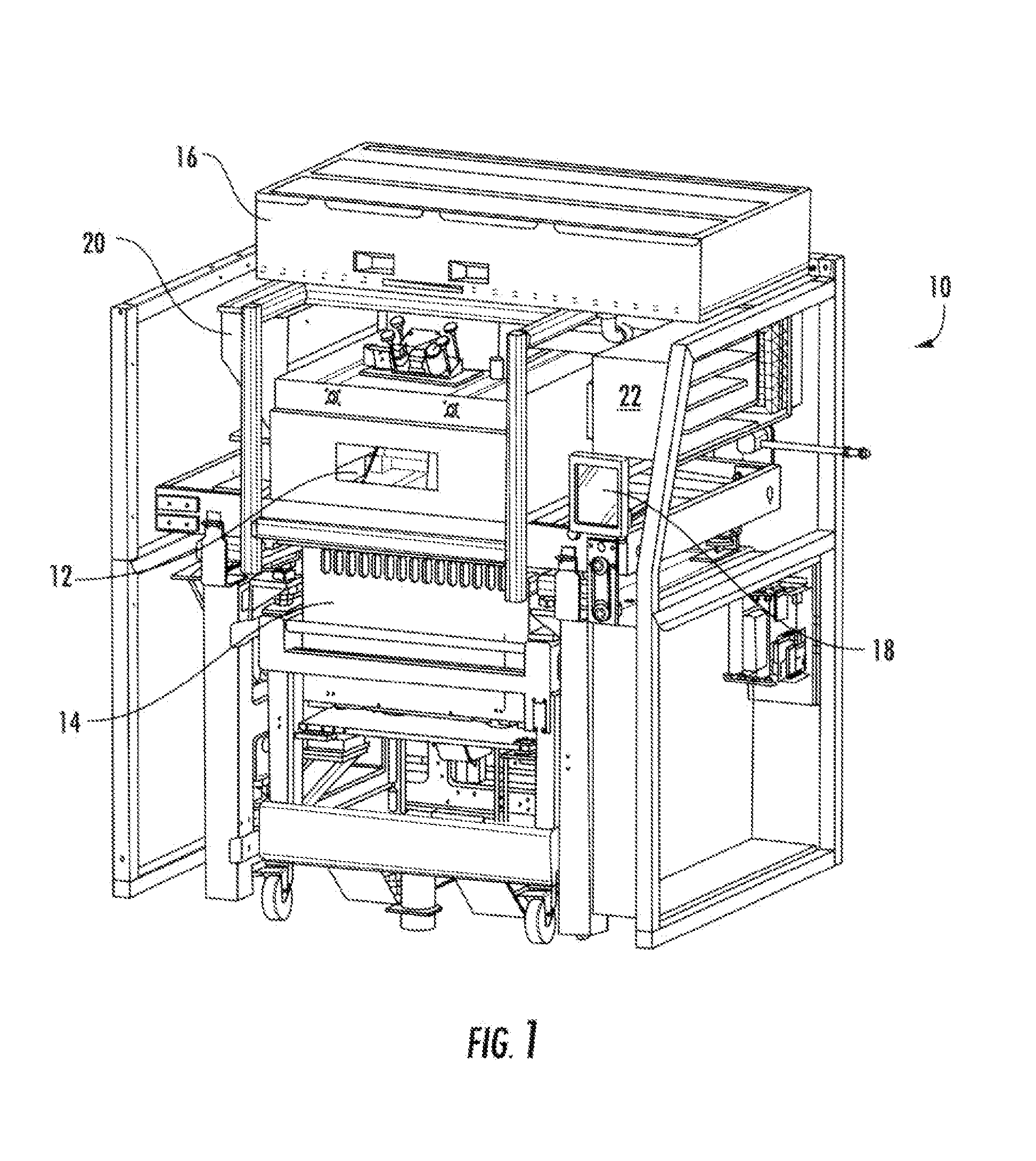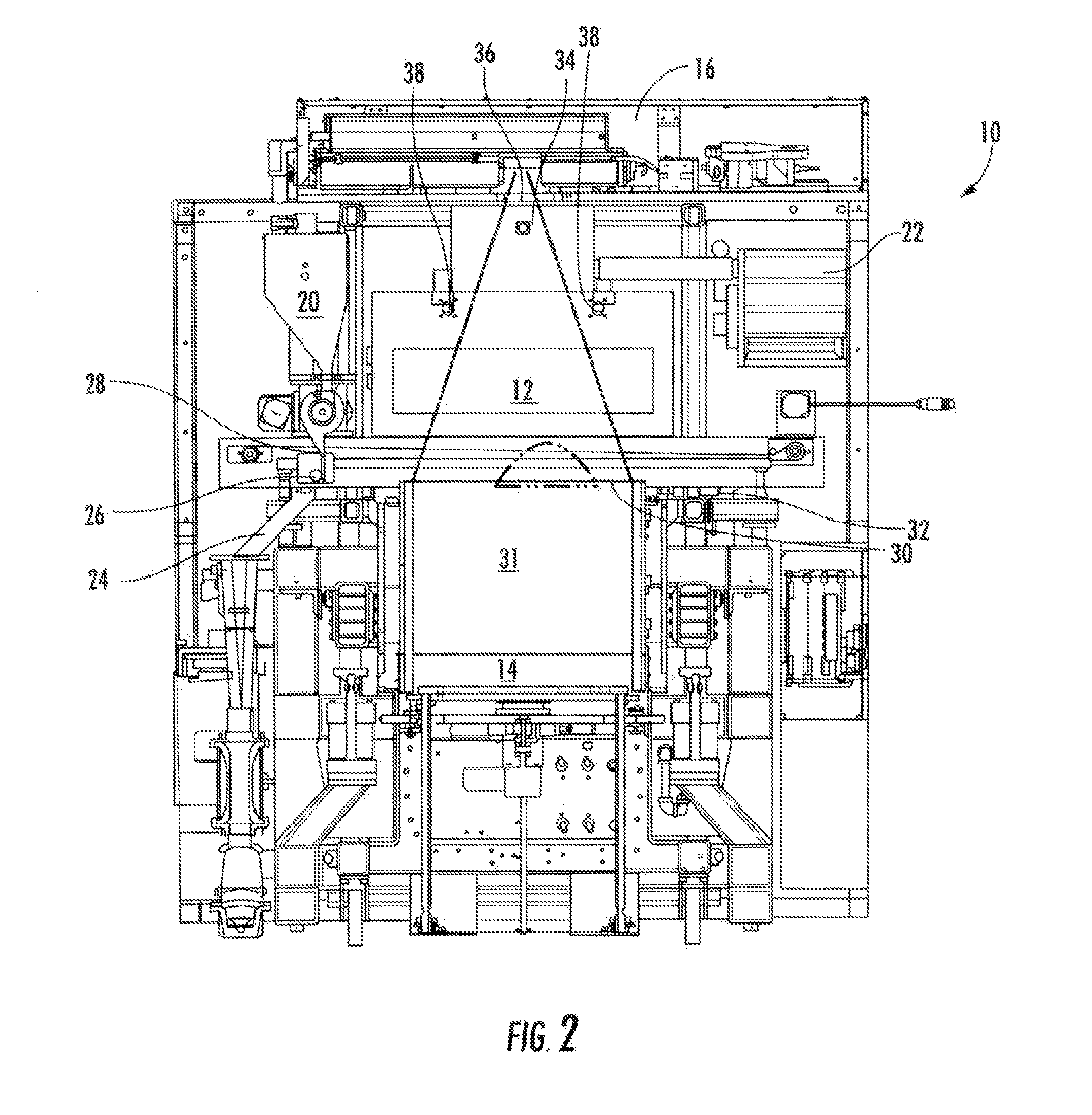Chute for Laser Sintering Systems
a laser sintering and sintering chamber technology, applied in auxillary shaping apparatus, additive manufacturing with solid and fluid, manufacturing environment conditioning, etc., can solve the problems of adversely affecting the final part, adversely affecting the surface, rough surface or other imperfections in the final part, etc., to reduce the likelihood of surface features, and improve the effect of part quality
- Summary
- Abstract
- Description
- Claims
- Application Information
AI Technical Summary
Benefits of technology
Problems solved by technology
Method used
Image
Examples
Embodiment Construction
[0027]The present invention now will be described more fully hereinafter with reference to the accompanying drawings, in which some, but not all embodiments of the invention are shown. Indeed, the invention may be embodied in many different forms and should not be construed as limited to the embodiments set forth herein; rather, these embodiments are provided so that this disclosure will satisfy applicable legal requirements. Although apparatus and methods for providing improved part quality and reduced powder disposal are described and shown in the accompanying drawings with regard to specific types of laser sintering systems, it is envisioned that the functionality of the various apparatus and methods may be applied to any now known or hereafter devised powder fusing systems in which it is desired to created three dimensional objects (parts) out of powder based upon digital data representing the part to be made. Like numbers refer to like elements throughout.
[0028]With reference t...
PUM
| Property | Measurement | Unit |
|---|---|---|
| laser power measurement | aaaaa | aaaaa |
| power | aaaaa | aaaaa |
| mechanical properties | aaaaa | aaaaa |
Abstract
Description
Claims
Application Information
 Login to View More
Login to View More - R&D
- Intellectual Property
- Life Sciences
- Materials
- Tech Scout
- Unparalleled Data Quality
- Higher Quality Content
- 60% Fewer Hallucinations
Browse by: Latest US Patents, China's latest patents, Technical Efficacy Thesaurus, Application Domain, Technology Topic, Popular Technical Reports.
© 2025 PatSnap. All rights reserved.Legal|Privacy policy|Modern Slavery Act Transparency Statement|Sitemap|About US| Contact US: help@patsnap.com



